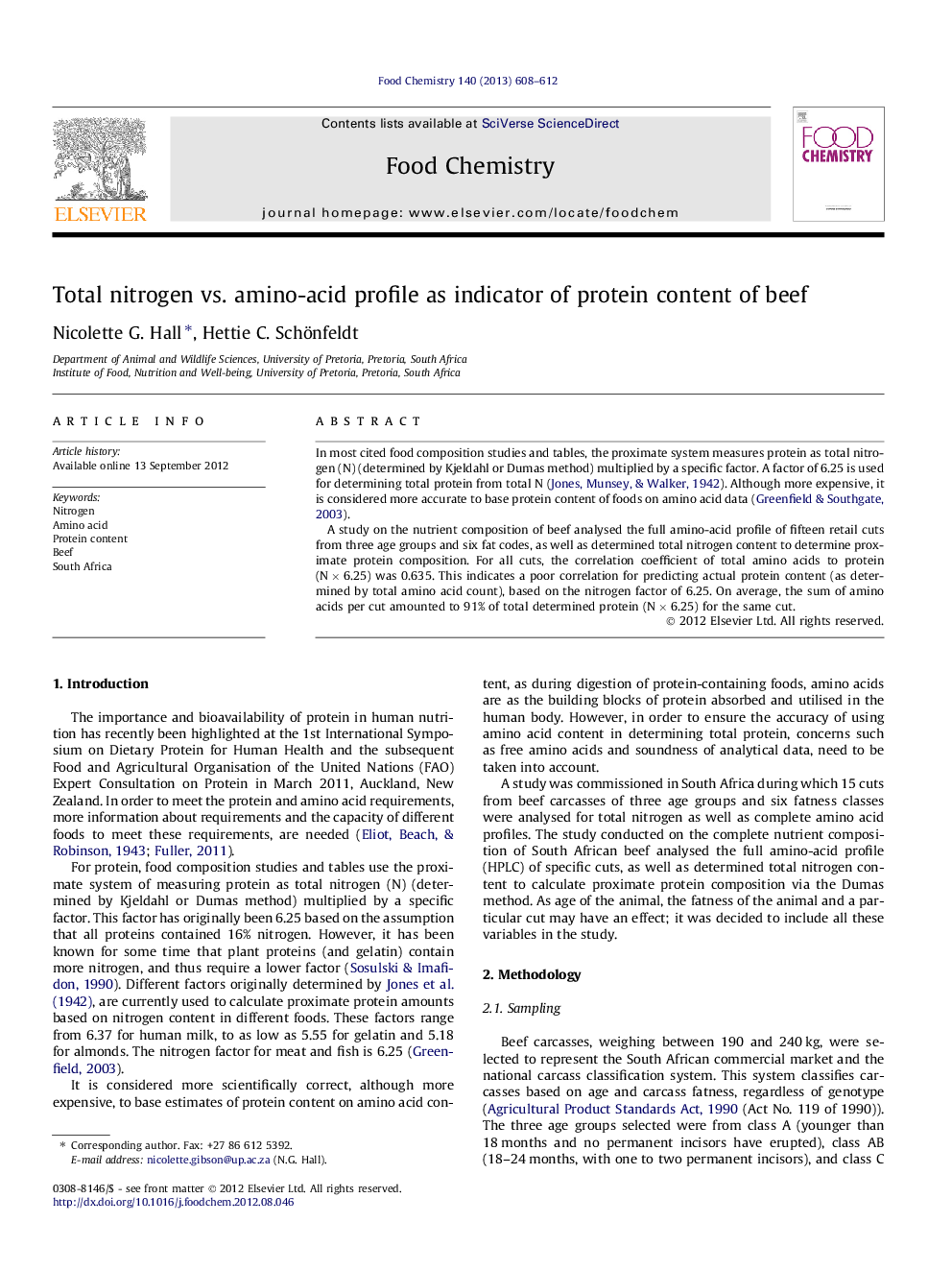| کد مقاله | کد نشریه | سال انتشار | مقاله انگلیسی | نسخه تمام متن |
|---|---|---|---|---|
| 1184059 | 963302 | 2013 | 5 صفحه PDF | دانلود رایگان |

In most cited food composition studies and tables, the proximate system measures protein as total nitrogen (N) (determined by Kjeldahl or Dumas method) multiplied by a specific factor. A factor of 6.25 is used for determining total protein from total N (Jones, Munsey, & Walker, 1942). Although more expensive, it is considered more accurate to base protein content of foods on amino acid data (Greenfield & Southgate, 2003).A study on the nutrient composition of beef analysed the full amino-acid profile of fifteen retail cuts from three age groups and six fat codes, as well as determined total nitrogen content to determine proximate protein composition. For all cuts, the correlation coefficient of total amino acids to protein (N × 6.25) was 0.635. This indicates a poor correlation for predicting actual protein content (as determined by total amino acid count), based on the nitrogen factor of 6.25. On average, the sum of amino acids per cut amounted to 91% of total determined protein (N × 6.25) for the same cut.
► The importance and bioavailability of protein in human nutrition has been emphasised.
► Amino acid count is a better determinant for total protein content.
► In the study, complete amino acid profile of beef amounted to 91% of protein based on total Nitrogen.
► Results are in line with results showing that the Jones factor might overestimate protein content.
Journal: Food Chemistry - Volume 140, Issue 3, 1 October 2013, Pages 608–612